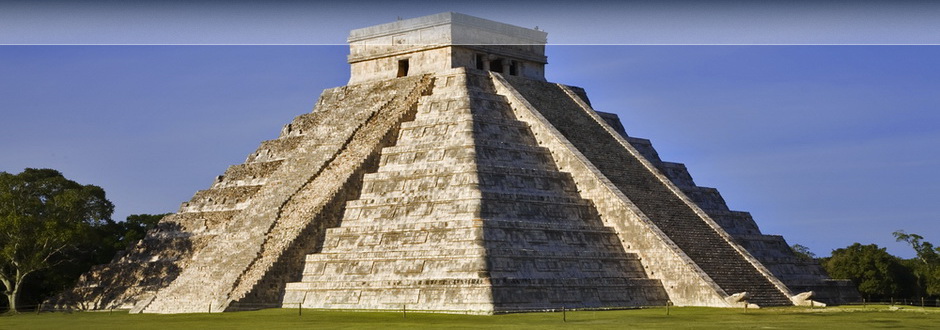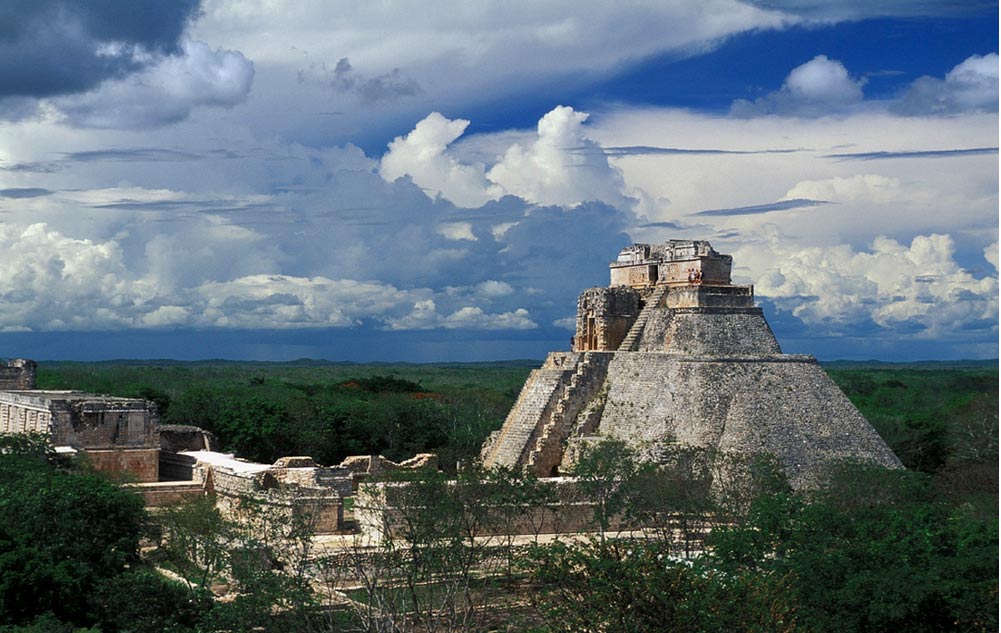The Ancient Maya
HJPD/Wikimedia Commons/Creative Commons 3.0 The traditional view of the Maya was that they were a peaceful people, content to gaze at the stars and trade with one another for jade and pretty feathers. That was before modern researchers deciphered the glyphs left behind on the statues and temples.
One of the many intriguing things about the Maya was their ability to build a great civilization in a tropical rainforest climate. Traditionally, ancient peoples had.

It turns out that the Maya were as fierce and warlike as their later neighbors to the north, the Aztecs. Scenes of wars, massacres, and human sacrifices were carved into stone and left behind on public buildings. The warfare between city-states got so bad that many believe that it had much to do with the eventual of the Maya civilization. Wolfgang Sauber/Wikimedia Commons/Creative Commons 3.0 As December of 2012 approached, many people noted that the Maya calendar would soon end.
It’s true: the Maya calendar system was complicated, but to make a long story short, it reset to zero on December 21, 2012. This led to all sorts of speculation, from a new coming of the Messiah to the end of the world. The ancient Maya, however, did not seem to worry much about what would happen when their calendar reset. They may have seen it as a new beginning of sorts, but there is no evidence that they predicted any disasters. Simon Burchell/Wikimedia Commons/Creative Commons 3.0 The Maya were and books. To the untrained eye, Maya books look like a series of pictures and peculiar dots and scribbles. In reality, the ancient Maya used a complex language where glyphs could represent a complete word or syllable.
Not all of the Maya were literate: the books seem to have been produced and used by the priest class. The Maya had thousands of books when the Spanish arrived but zealous priests burned most of them. Only four original Maya books (called 'codices') survive. Raymond Ostertag/Wikimedia Commons/Creative Commons 2.5 The from Central Mexico usually is the one associated with, but that’s probably because Spanish chroniclers were there to witness it. It turns out that the Maya were just as bloodthirsty when it came to feeding their Gods. The Maya city-states fought frequently with one another and many enemy warriors were taken captive. These captives were usually enslaved or sacrificed.

The Ancient Mayan Ruins Of San Gervasio
High-level captives such as nobles or kings were forced to play in the ceremonial ball game against their captors, re-enacting the battle they lost. After the game, the outcome of which was predetermined to reflect the battle it represented, the captives were ritually sacrificed. Swords and sandals crusader full download torrent. Unknown Mayan Artist/Wikimedia Commons/Public Domain The Maya were obsessive astronomers who kept very detailed records of the movements of the stars, sun, moon, and planets.
They kept accurate tables predicting eclipses, solstices, and other celestial events. Part of the reason for this detailed observation of the heavens was that they believed that the sun, moon, and planets were Gods moving back and forth between the heavens, the underworld (Xibalba) and the Earth. Celestial events such as equinoxes, solstices and eclipses were marked by ceremonies at Maya temples.
John Hill/Wikimedia Commons/Creative Commons 3.0 The Maya were keen traders and merchants and had trade networks throughout modern-day Mexico and Central America. They traded for two sorts of items: prestige items and subsistence items. Subsistence items included basic necessities like food, clothing, salt, tools, and weapons. Prestige items were things coveted by the Maya that were not crucial to daily life: bright feathers, jade, obsidian, and gold are some examples. The ruling class treasured prestige items and some rulers were buried with their possessions, giving modern researchers clues into Maya life and who they traded with.
Havelbaude/Wikimedia Commons/Creative Commons 3.0 Each major city-state had a king, or Ahau. The Maya rulers claimed to be descended directly from the Sun, Moon or planets, which gave them divine ancestry. Because he had the blood of Gods, the Ahau was an important conduit between the realm of man and the heavens and underworld, and often had key roles in ceremonies.
The Ahau was also a wartime leader, expected to fight and play in the ceremonial ball game. When the Ahau died, rulership generally passed to his son, although there were exceptions: there were even a handful of Queens of mighty Maya city-states. Unknown Mayan Scribe/Wikimedia Commons/Public Domain In 700 A.D. Or so, the was going strong. Powerful city-states ruled weaker vassals, trade was brisk and cultural achievements such as art, architecture, and astronomy peaked. By 900 A.D., however, the powerhouses like Tikal, Palenque, and Calakmul had all fallen into decline and would soon be abandoned.
So, what happened? No one knows for sure. Some blame warfare, others climate change and still other experts claim it was disease or famine.
Possibly it was a combination of all of these factors, but the experts can’t seem to agree. Gabayd/Wikimedia Commons/Public Domain The Ancient Maya civilization may have fallen into decline a thousand years ago, but that doesn’t mean that the people all died off or vanished.
The Ancient Mayan Culture

Videos
The Maya culture still existed when arrived in the early 1500’s. Like other American peoples, they were conquered and enslaved, their culture forbidden, their books destroyed. But the Maya proved more difficult to assimilate than most.
For 500 years, they fought hard to maintain their culture and traditions and today, in Guatemala and parts of Mexico and Belize there are ethnic groups who still hold fast to traditions such as language, dress, and religion that date back to the days of the mighty Maya civilization.